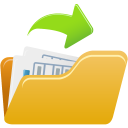Create a Link to a Page on Your Site


These steps will help you create a text or image link to a page on your site. For these steps, the page must appear in your All Pages list, so this kind of linking will not work if you need to link to one of your products, classes, events, or news items. Please see below for instructions on how to link to dynamic module pages.
- Go to Website > Website Editor and go to the page where you want to create the link.
- If you are creating a new module for the link: Click Add Body Content and click the Add button for the Content module at the top of the list. If you are adding the link to an existing module: Click the Edit button (the fat little pencil) in the gray toolbar of an existing module where you want to create the link.
- If you are adding a link to an image: click on it to highlight it. If you are making a text link: type out your text and then highlight it with your mouse. (Example: Click here to see our best deals in our Huge Sale!)
- Click on the Insert/Edit Link button (in the functions above the Content editing box, in the top row of buttons: this button looks like chain links).
- Click on the Browse Server button (the button on the far right of the Source field; it looks like a folder with a magnifying glass).
- In the upper left click on Pages and then find the page you are linking to in the list and click on it. Please remember that links to unpublished pages will not work until you publish the page. Also, if you don't find the page in the list, it may have been moved to a sub-folder of pages on the left (you may need to click on the little triangle next to the folder to see the sub-folders). If you cannot find the page in any of the folders, it is most likely a dynamically generated module page (e.g. a product, category, event, news item, etc.). If that is the case, please follow the instructions on Creating a Link to a Dynamic Module Page below.
- In the Link Properties window click OK.
- Scroll to the bottom of the screen and click the Save button.
- Test your new link to verify that it works correctly.
Create a Link to a File


These steps will help you create a text or image link to a file hosted on our servers for your site. Our system will allow you to upload the following file types: Documents / Productivity - CSV, DOC, DOCX, PDF, PPT, PPTX, RTF, TXT, XLS, XLSX. Images - GIF, JPG, PNG, SVG. Audio - MP3, WAV. Video - AVI, FLV, MOV, MPG, MP4, QT, SWF, WMV. Compressed Files - ZIP.
-
Go to Website > Website Editor and go to the page where you want to create the link.
-
If you are creating a new module for the link: Click Add Body Content and click the Add button for the Content module at the top of the list. If you are adding the link to an existing module: click the Edit button (the fat little pencil) in the gray toolbar of an existing module where you want to create the link.
-
If you are adding a link to an image: click on it to highlight it. If you are making a text link: type out your text and then highlight it with your mouse. (Example: Click here to view our Summer Catalog!)
-
Click on the Insert/Edit Link button (in the functions above the Content editing box, in the top row of buttons: this button looks like three chain links).
-
Click on the Browse Server button (the button on the far right of the Source field; it looks like a folder with a magnifying glass).
-
If you have already uploaded the file: click on the folder it is in and find it in the list (or Search for it in the upper right) and then click on the file.
If you have not uploaded the file yet, do the following steps:
- Click on the blue Upload File button.
- Click on the green Add Files button and search your computer for the file you want.
- Either double-click on the file or click on it once and then click the Open button.
- You will see a small thumbnail image of your file in the Upload Files window. Click on the blue Start Upload button.
- Depending on the size of the file you are uploading and the speed of your connection, you may see a status bar for the upload. Once the file has finished uploading, the Upload Files window will disappear.
- You will see your file at the top of the list. Click on the file.
-
You will see the URL for the file inserted into the URL field for the link. Click on the drop-list arrow for Target and then click on New Window (blank). The reason you will want the file to download in a new window is because in many cases a browser will take your visitor away from your site to load the file in the window. By having it load in a new window your visitor can download the file, and when they are done, they can close that window and they will be right back at your site.
-
Click OK.
-
Scroll down to the bottom of the screen and click the Save button.
-
Test your new link to verify that it works correctly.
Create a Link to an External Page or to a Dynamic Module Page


These steps will help you create a text or image link to an External Page (a page that is not on your website) or to a Dynamic Module Page (these are pages that are generated by the system: for example, if you look at your Calendar and click on View Entire Calendar, the system takes you to a dynamic page for the current month based on the information you've put into the system). Dynamic Module Pages include Categories and Products in your online store, Categories and Events in your Calendar, Categories and Classes in your Classes module, and individual items in the following modules: FAQ, Job Listings, News, and Newsletter Archive. It is also possible to link to a specific search that you do in your Search module, and those results are also dynamically generated.
-
Go to Website > Website Editor and go to the page where you want to create the link.
-
If you are linking to an external web page: open a new tab or window in your browser and go to the page that will be the end destination of the link you are making. Highlight and copy the web page URL.
If you are linking to a Dynamic Module Page: go to the page that will be the end destination of the link you are making. Highlight and copy the web page URL. IMPORTANT: If your website is not live yet and/or if you are still logging in with the mywebsite.rainadmin.com/admin address, you should copy everything after the .com, so the part of the link you will copy will start with the / after the .com and will look like this: /shop/shoes/nike-streak.htm
-
After you have copied the URL, go to the page on your site where you want to create the link.
-
If you are creating a new module for the link: Click Add Body Content and click the Add button for the Content module at the top of the list.
If you are adding the link to an existing module: Click the Edit button (the fat little pencil) in the gray toolbar of an existing module where you want to create the link.
-
If you are adding a link to an image: Click on it to highlight it.
If you are making a text link: Type out your text and then highlight it with your mouse. (Example: Click here to go the Nike website.)
-
Click on the Insert/Edit Link button (in the functions above the Content editing box, in the top row of buttons: this button looks like three chain links).
-
Paste the web address you copied into the URL field. NOTE: If you are linking to an External Page, you need to also do the following:
- Click on the drop-list arrow for Target and then click on New Window (blank). The reason you will want the external page to open in a new window is because the browser will take your visitor away from your site. By having it open in a new window, your visitor can view the page and when they are done, they can close that window and they will be right back at your site.
-
In the Link Properties window click OK.
-
Scroll to the bottom of the screen and click the Save button.
-
Test your new link to verify that it works correctly.
Create a Link to an Email Address


These steps will help you create a text or image link to an email address. This kind of link will open your visitor's default email program on their computer. In some cases your visitor might not use such software at all, preferring instead to use browser-based email such as Yahoo Mail or Gmail. If they don't have email software they use, their system will open a default program that may not even be set up for them yet, so it is a good idea to make sure that the link you create to your email address also shows the text of the email address. Please follow the steps and see the example below:
-
Go to Website > Website Editor and go to the page where you want to create the link.
-
If you are creating a new module for the link: Click Add Body Content and click the Add button for the Content module at the top of the list.
If you are using an existing module: Click the Edit button (the fat little pencil) in the gray toolbar of an existing module where you want to create the link.
-
If you are adding a link to an image: Click on it to highlight it.
If you are making a text link: Type out your text and then highlight it with your mouse. (Example: Email us at info@outdoor24-7.com!)
-
Click on the Insert/Edit Link button (in the functions above the Content editing box, in the top row of buttons: this button looks like three chain links).
-
In the URL field, enter the following: mailto:
-
Enter the email address the link will be sending to, e.g. mailto: info@outdoor24-7.com (please note there are no spaces in the URL field)
-
Click the Target drop-list and then click on New Window. You will want this function in case they are using web mail, so it won't take them away from your site; it will open their web mail in a new tab.
-
Click OK.
-
Scroll to the bottom of the screen and click the Save button.
-
Test your new link to verify that it works correctly.
Another type of link is an Anchor link, which will basically jump to a certain part of a page. If you want to learn more about Anchor links, click here: Link to Page Sections with Anchor Links.










